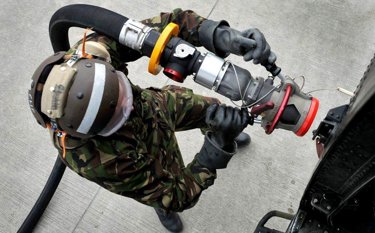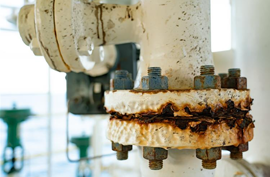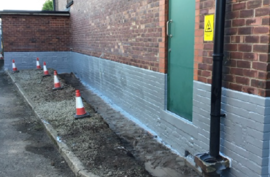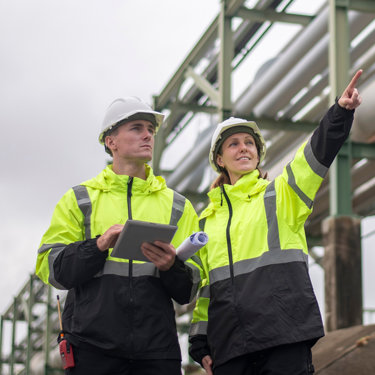Fuel tank and manway repair at RAF Lakenheath
Published: 21 August 2020
The project
Over the last two years, Adler and Allan has undertaken a major contract to refurbish fuel tanks at the USAF base at RAF Lakenheath in Suffolk. With some of the tanks built originally in the 1960’s, the tanks are required to be inspected and repaired every 5 to 10 years.
Key to the air force was being provided with practical, flexible solutions to meet the requirements of a changing brief. Dealing swiftly with problems that hadn’t initially been anticipated, Adler and Allan ensured works were completed on time, preventing the additional expense and disruption associated with unforeseen downtime.

The solution
Groundwork and preparation
Groundwork and preparation are essential, so before remedial work could be started, the tanks had to be emptied, cleaned and certified ‘Gas Free’.
Safety monitoring
When dealing with fuel tanks, safety is paramount. The team continuously monitored gas levels inside the tanks and surrounding area to ensure a safe working environment. Specialist safety equipment was supplied, such as rescue tripods, harnesses and emergency breathing apparatus as back-up.
Remedial work
The first phase involved the removal of unused attachments to the floor of the tanks. The floor was then primed ready for Adler and Allan's Adalline 400 coating – a strong and durable coating, which ensures a clean, water and chemical-proof barrier with no leakage.
Previous experience
The customer agreed to the introduction of inlet pipe diffusers based on a design Adler and Allan had developed for a similar project at RAF Mildenhall. These diffusers reduce turbulence and prevent static build-up when the storage tanks are filled from empty.
Bespoke solutions
New stainless steel stillwell tubes were required to allow the tank fuel level probe to transit from the top to the bottom of the tank, in order to provide accurate readings that wouldn’t be distorted by fuel movement. To achieve this, an existing tank manway cover was removed and fitted a new one incorporating a 6”nb flange, designed and fabricated bespoke to the job.
The new stillwell was lowered through an access manway and bolted to the new flange inside the tank. A stainless steel striker plate was then welded to the tank baseplates, below the stillwell tube, to fix it firmly into place.
Adaptable approach
When the initial storage tank was cleaned, it became clear that the manway walls were severely corroded. A great deal of further work was necessary, so at this point the contract was modified and replaced all 12 manways, capped off the existing vent pipes and re-designed new vent pipes for the job. Further investigations indicated that the flame arrestors were also heavily corroded and needed replacing. Although not in the initial brief, this part of the job proved to be the most time consuming and challenging element. Similar work to this was completed at RAF Mildenhall at the same time, Adler and Allan employed the same methods to replace the damaged manways.
The existing concrete was drilled out from around each manway and removed. The original manways were then burnt out and new ones installed. Finally, new vent-piping was installed to ensure the manways operated efficiently and safely.
More from our Knowledge Hub
 Insights
InsightsEarth Day 2025: Enabling a sustainable future while supporting today’s infrastructure in an evolving energy landscape
 Insights
InsightsMitigating climate change risks through planned preventive maintenance
 Insights
InsightsProtective coatings: Safeguarding infrastructure against climate change
 Insights
InsightsDelivering the Water (Special Measures) Act: Supporting compliance and innovation
Environmental compliance today, creating a sustainable tomorrow
Helping you reduce risk to the environment and your operation by managing assets compliantly while achieving commercial, ESG, and net-zero goals.
Contact our experts
